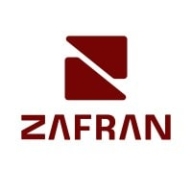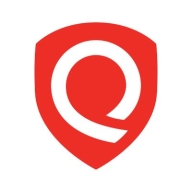


FortiDevSec and Qualys CyberSecurity Asset Management are leading cybersecurity solutions focusing on different aspects of security. FortiDevSec excels in threat detection capabilities, while Qualys stands out in asset management prowess. FortiDevSec appears to have an advantage in pricing and customer support, yet Qualys is regarded more highly for its broad feature set, which many believe justifies its cost.
Features: FortiDevSec offers advanced threat detection, seamless integration within Fortinet's Security Fabric, and enhanced cybersecurity coverage. Qualys provides holistic visibility, in-depth asset tracking essential for risk assessment, and comprehensive asset management solutions.
Ease of Deployment and Customer Service: FortiDevSec is known for seamless deployment and strong support for easy infrastructure integration. Qualys benefits from an efficient cloud-based setup that simplifies deployment over large networks, although FortiDevSec is marked for more attentive customer service.
Pricing and ROI: FortiDevSec presents a competitive pricing model that aligns well with its threat detection strength and provides a robust return on investment by cutting security breaches. Qualys requires higher initial investment; however, its extensive asset management capability offers substantial ROI by boosting operational efficiency.



Zafran Security integrates with existing security tools to identify and mitigate vulnerabilities effectively, proving that most critical vulnerabilities are not exploitable, optimizing threat management.
Zafran Security introduces an innovative operating model for managing security threats and vulnerabilities. By leveraging the threat exposure management platform, it pinpoints and prioritizes exploitable vulnerabilities, reducing risk through immediate remediation. This platform enhances your hybrid cloud security by normalizing vulnerability signals and integrating specific IT context data, such as CVE runtime presence and internet asset reachability, into its analysis. No longer reliant on patch windows, Zafran Security allows you to manage risks actively.
What are the key features of Zafran Security?
What benefits can users expect from Zafran Security?
In industries where security is paramount, such as finance and healthcare, Zafran Security provides invaluable protection by ensuring that only exploitable vulnerabilities are addressed. It allows entities to maintain robust security measures while allocating resources efficiently, fitting seamlessly into existing security strategies.
FortiDevSec enhances application security by integrating seamlessly into development pipelines, facilitating early threat detection and mitigation. It supports continuous delivery models and ensures robust application defenses while maintaining efficient development workflows.
By embedding security into DevOps processes, FortiDevSec allows teams to address vulnerabilities during development. It automates security assessments, offering insights that help in reducing risk and improving compliance. Its integration capabilities streamline application security without disrupting developer productivity.
What are the key features of FortiDevSec?Industries implementing FortiDevSec like finance and healthcare benefit from its ability to meet strict regulatory standards while ensuring secure and rapid application deployment. It supports integration into existing workflows, making it a valuable tool for maintaining compliance and protecting sensitive data.
Qualys CyberSecurity Asset Management provides advanced real-time asset visibility, dynamic tagging, and External Attack Surface Management. It streamlines asset discovery and management using cloud agents and IP-based scanning, enhancing risk management and software lifecycle tracking.
Qualys CyberSecurity Asset Management offers a comprehensive solution for managing asset inventories and tracking software lifecycle states. It facilitates network visibility and supports zero-day vulnerability solutions, enhancing security posture through efficient monitoring. Users benefit from its cloud-based interface, which provides in-depth asset configurations and insights. Key features include automated vulnerability scanning and unauthorized software management, reducing manual efforts. The platform also emphasizes the importance of timely remediation and ongoing risk mitigation across multiple environments. Despite its strengths, users note the need for enhanced integration with additional CMDBs beyond ServiceNow, as well as cost efficiency improvements. Requests also include better report customization, more scan control, and a simplified UI.
What are the key features of Qualys CyberSecurity Asset Management?In industries like finance, healthcare, and manufacturing, Qualys CyberSecurity Asset Management enhances asset control by offering visibility into hardware and software configurations. It aids in maintaining security compliance and identifying unauthorized software, crucial for sectors with strict regulatory requirements.
We monitor all Vulnerability Management reviews to prevent fraudulent reviews and keep review quality high. We do not post reviews by company employees or direct competitors. We validate each review for authenticity via cross-reference with LinkedIn, and personal follow-up with the reviewer when necessary.